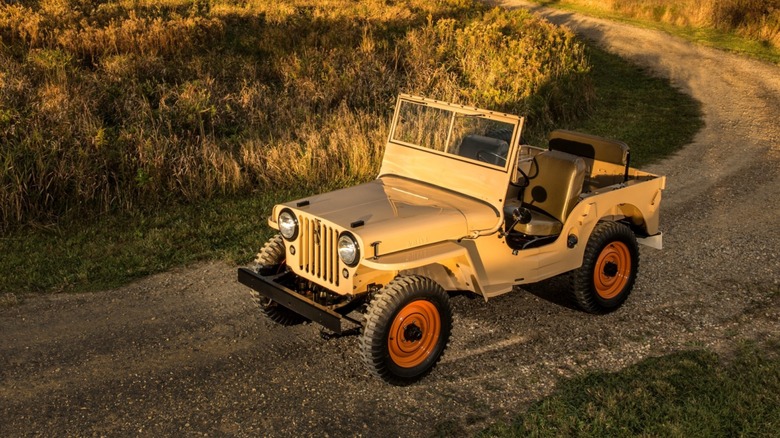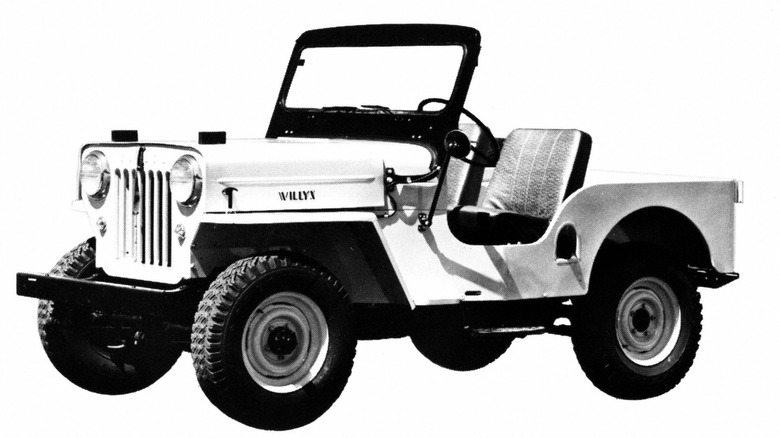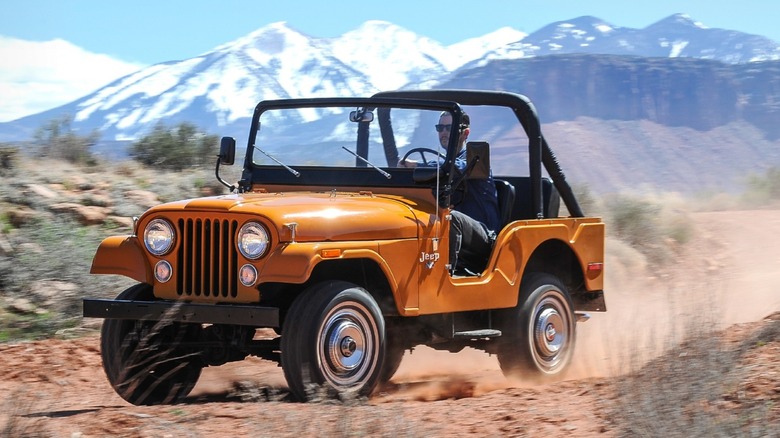What Does CJ Stand For On A Jeep?
There are many theories about the Jeep name's origins and what it stands for, but the meaning of letters "CJ" attached to first Willys-Overland CJ-2A models offered to the public isn't up for debate. It is widely accepted that CJ stands for "Civilian Jeep."
Before the CJ-2A was released to the masses, Willys and Ford combined to produce over 600,000 general-purpose "light reconnaissance" vehicles for U.S. and Allied Forces during WWII. The rugged 4X4 vehicles were highly publicized before and during their use in the war. Press coverage ranged from an introductory stunt where an early model Willys MB was driven up the steps of the United States Capitol, to being seen in newsreel footage highlights.
While the Jeep name wasn't granted trademark-status as a brand-name until 1950, Willys began producing the CJ-2A before the end of WWII. It was already known as a Jeep, even if the letter J wasn't officially capitalized yet, since Willys had applied for the Jeep trademark as early as 1943.
How many different Jeep CJ models are there?
There were seven CJ model iterations during the 40 year span between the 1945 introduction of the Civilian Jeep and the discontinuation of the Jeep CJ line in 1985. While the CJ-2A was the first of the CJ line, the various model introductions were not distinct generations but more of a blended family.
The CJ-2A, as we know, debuted in 1945 as the first light-duty 4X4 vehicle mass produced for the public. It would continue to serve as a workhorse until 1949 with nearly 215,000 units produced.
The CJ-3A replaced the CJ-2A in 1949. While it incorporated changes, such as reducing water leaks, increased legroom, and improved suspension, it was still most suitable for farm and industrial applications. Production of the CJ-3A was phased out in 1953 with nearly 132,000 units delivered.
As CJ-3A production was winding down, the CJ-3B was ramping up. The CJ-3B would be the last of the Willys-Overland Jeeps as the company was sold to the Kaiser-Frazer Corporation shortly after its debut in 1953. Production of civilian CJ-3Bs continued until 1964 under the Willys Motors name adopted by Kaiser-Fraizier, and military versions remained in production until 1968. As the last of the Willys Flat Fenders, there were almost 200,000 CJ-3Bs produced.
The last of the CJs, precursors to today's Jeep Wrangler
The CJ-5 debuted under the Kaiser Corporation's leadership in 1955 with rounded front fenders, larger headlights, and a slender grille fit between them. CJ-5 production would continue with few changes until 1983 with over 603,000 units delivered. The most notable changes followed the brand's 1970 acquisition by American Motors, also known as AMC.
In 1972 the CJ-5 was stretched a few inches to accommodate new AMC engines, including a 5-liter V8 and the Dana 30 front axle became standard. A number of modifications to the CJ-5 body and frame in 1976 created a division that prevents swapping tops between 1975 and earlier and later model tubs.
The CJ-6, essentially a 20-inch longer wheelbase version of the CJ-5, was also introduced in 1955 and continued through 1981 as another Kaiser-era Jeep model made during the AMC years. It was never as popular as the CJ-5, especially in the U.S. where it was largely supplanted by the CJ-7 upon its debut in 1976.
American Motors continued producing the CJ-7 into 1985 for the 1986 model year. While it, and the pickup-truck-like CJ-8, introduced in 1981, were more comfortable than previous CJ models, they were still very utilitarian vehicles designed for traversing rugged landscapes. By 1985, consumers were choosing more comfortable off-road SUVs over the gritty CJ, forcing AMC back to the drawing board for the next generation of small Jeeps.


